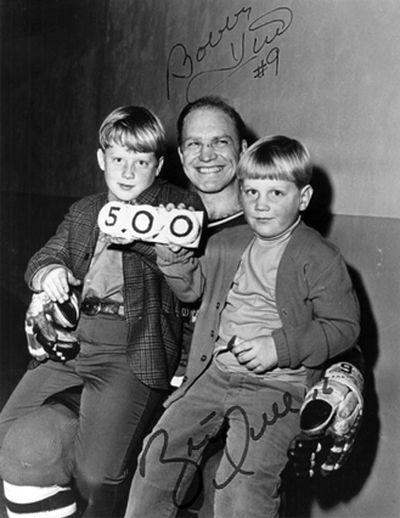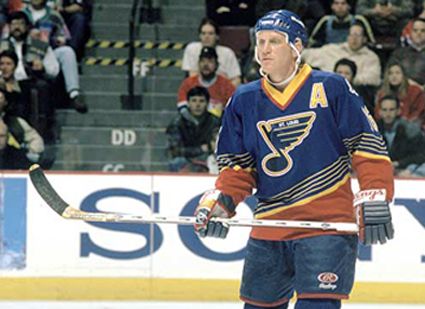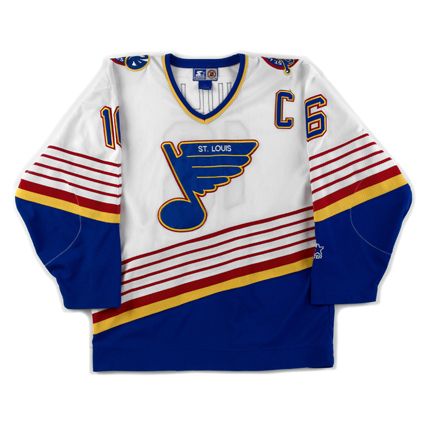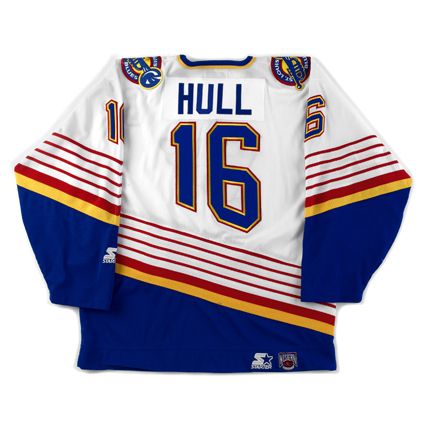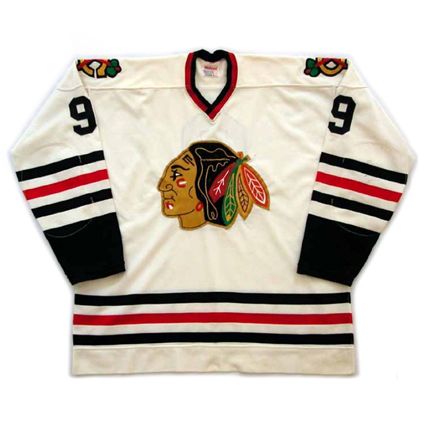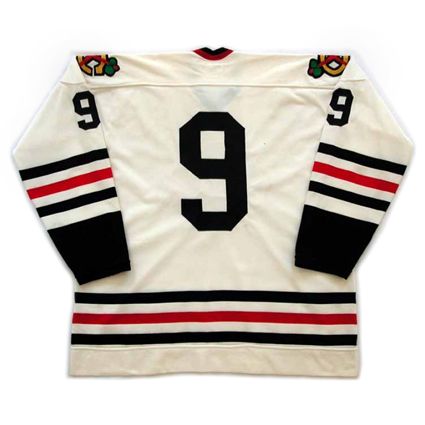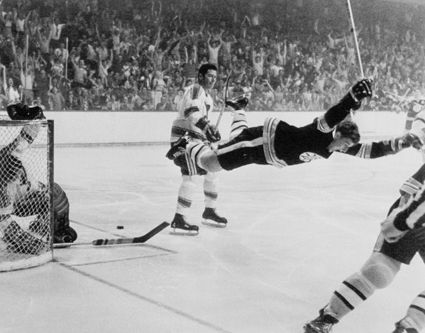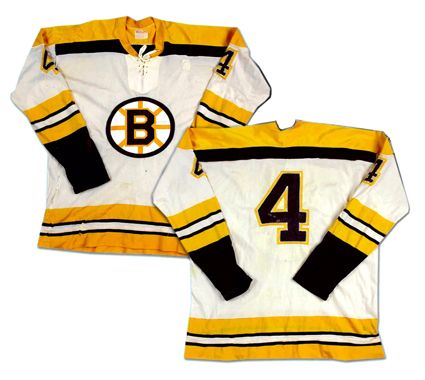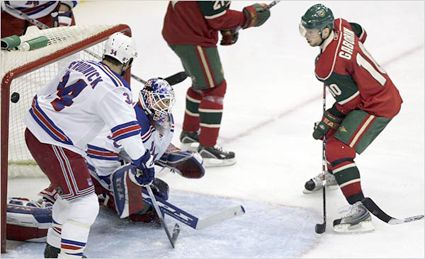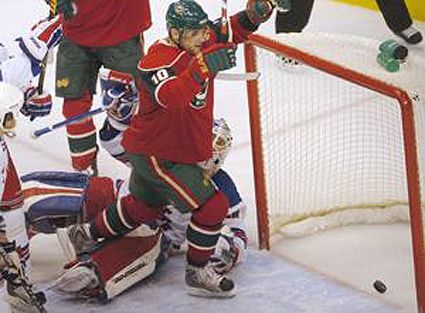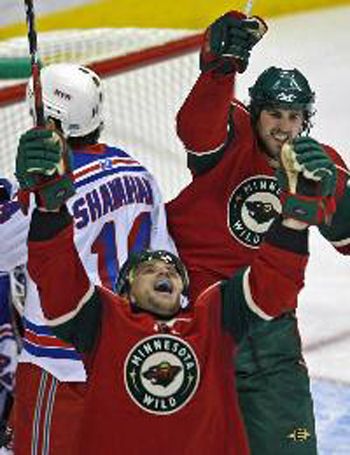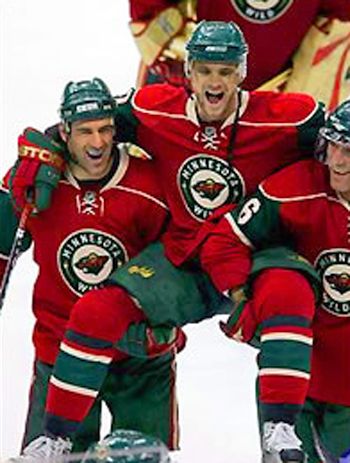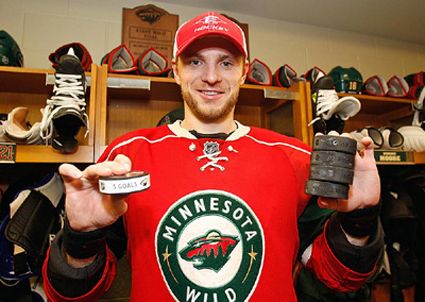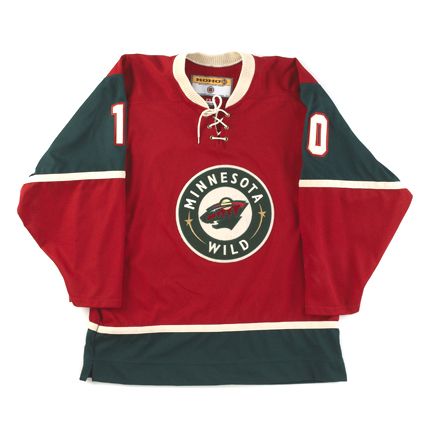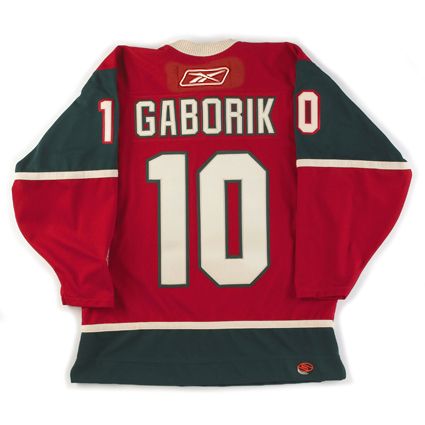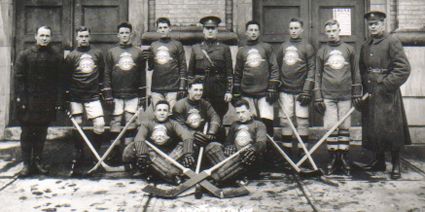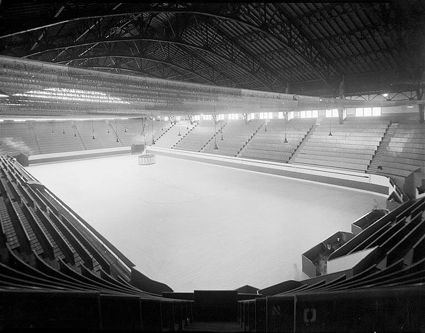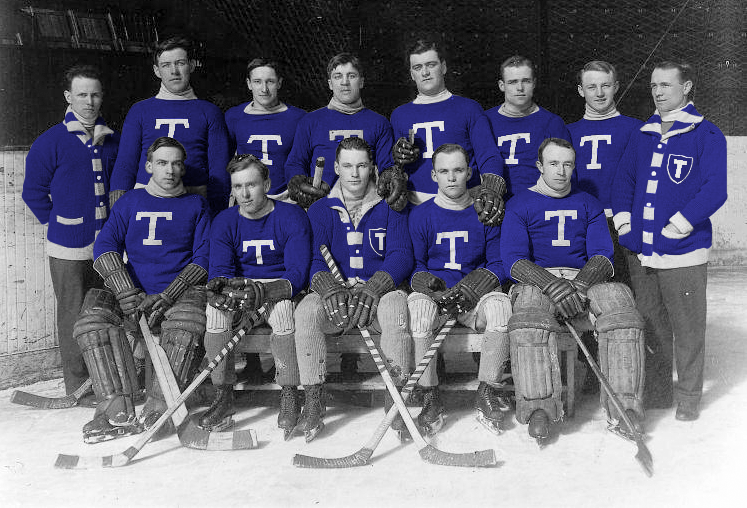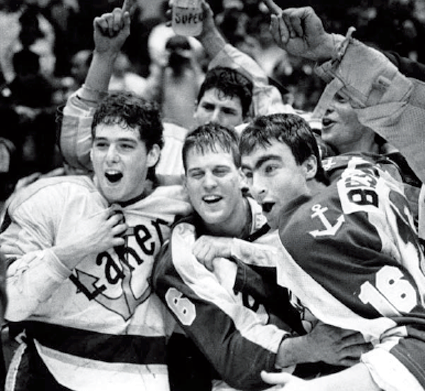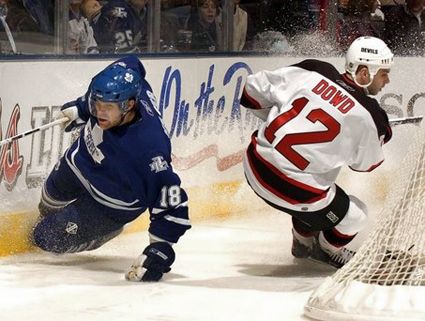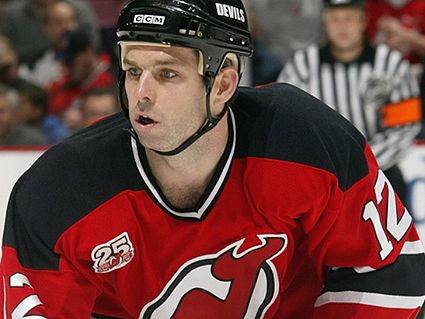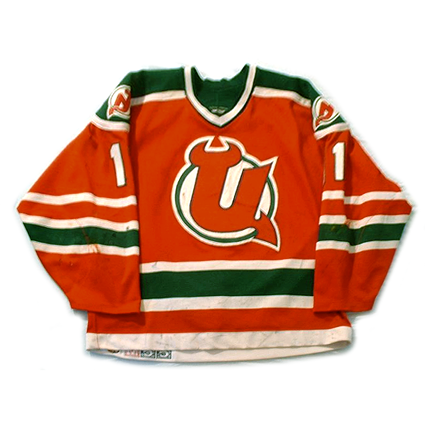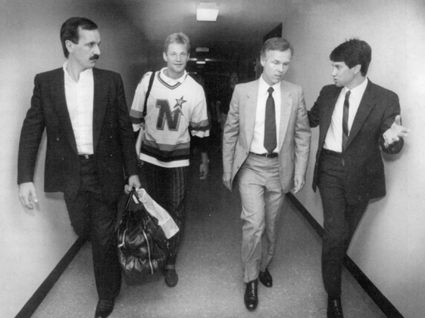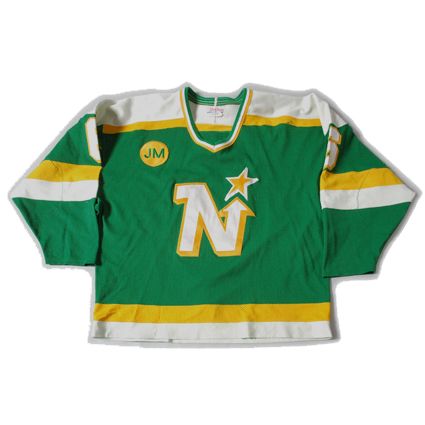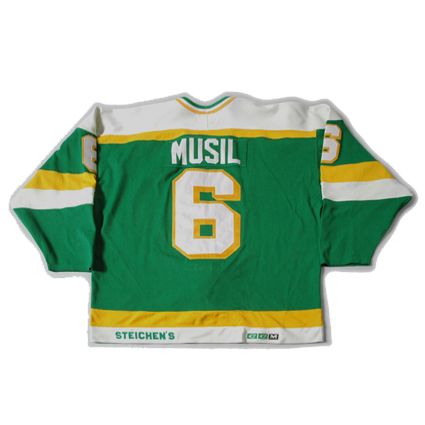In 1983 I drafted Czech defenseman Frantisek Musil in the second round. I had watched him play in the World Championships, and he looked like a terrific young player. The Quebec Nordiques at that time has the Stastny brothers, who had defected from Czechoslovakia, and they were tearing up the NHL.
I drafted Frantisek, went to the World Championships in Munich, and talked to him about defecting. I said, "After the last game of tournament, I'll have a police escort get up to the airport and take you back." He says, "Let me think about it, and I'll talk to you later in the week." They always had security watching the Czech team. He didn't come with us in '83. THen in 1984, the third Canada Cup came along, and Musil was playing on the Czech team and I was managing the U. S. team. I'd call him every day and try to encourage him to defect at the end of the tournament. Again, it didn't happen.
Finally, I went to Toronto and hired the same Czech contact who had helped get the Stastnys out of Czechoslovakia. He said if he personally go Musil out, it would cost $250,000, with $25,000 up front for expenses.
That had been his price to get the Stastnys out, too. I said, "OK." Back then, you didn't have to pay the defectors a signing bonus, so it was almost like a wash. I gave him the $25,000, and for the next two years, he'd fly over to Europe and watch them play in different championships, and he'd say, "He's coming, he's coming."
In 1986, I got a call from Rich Winter in Edmonton, and Rich says, "Louis, I'm the agent for Frantisek Musil." Winter had convinced him to defect.
He says, "Musil's going to be vacationing in Umag, Yugoslavia, starting tomorrow." I said, "I'll fly over and meet him in Zagreb at the American Consulate, and I'll get him out from there." He says: "OK, I'm coming, too, but you'll have to give me a little time. We'll meet there in two days." I made airline reservations to fly to Trieste, Italy, which is right on the Yugoslavian border. Bob Bruce, from KSTP, was around the office while all this was going on, and he says, "Louie, do you mind if I come with a cameraman?"
I said, "What are you going to do?" He says; "I'd just like to film it. I won't say anything, won't do anything - I'll stay out of the way." I said, "You better, because I'm not looking after you." He says, "Just tell me what flight you're on."
So we ended up in Trieste, and I rented a car. I said to Bruce and his cameraman ,"I'm going to make a dry run to Umag tonight to see what I have to do to drive through the border, so see if I'm going to have to put him in the trunk to sneak him out tomorrow."
We drove to Umag, couldn't find him, and drove back. As we're coming back across the border, I see the Yugoslav guards all have guns and that they stop you and check the car. I see the Italian gate - just a wooden gate - 100 yards farther down, and I figure I can drive slowly and then just gun it and go right through the wooden arm and be on the other side, if that's what I gotta do.
So the next day we drive down to Zagreb. We get to the American Consulate, and I go up to the door, and there's a Marine sitting behind a bulletproof window. I said to him: "My name's Lou Nanne. I'm supposed to meet Frantisek Musil here." He says, "We don't know any Frantisek Musil." I said, "He's a Czech guy who wants to defect, and he should be here with Rich Winter."
He says, "We don't have anybody here." I said, "Would you let me talk to the consulate? "So he rings upstairs, gives me the phone, and I ask the guy if a Frantisek Musil has come here with Rich Winter. "Yeah," he says, "but I sent them to Belgrade."
I said: "Belgrade? What did you do that for?" He says, "Well, that's where they process people who want to defect."
I said: "You've gotta help me. This guy who wants to defect is a hockey player." He says, "Sorry, I can't help you."
Fortunately for me, I had Bruce and his cameraman there. I said; "Would you come down here for a minute? I've got a person from ABC here with a camerman, and if you don't come down we're going to do a story on how you won't give any help to an American citizen who needs it here in Zagreb."
He comes down and I said, "Do you want to go on camera and say you won't help me?"
He says; "No, I'll help. What do you want me to do?" I said: "Make a call, stop them from being processed there, and tell them to drive back here. Otherwise it will take two years to get him out of that holding area."
So he did that.
I said: "I'll tell you what. I want to take you and your whole staff out to dinner. Pick the best restaurant in Zagreb."
They said great. So there's six of us, and we're eating and drinking wine, and we're having a real good time. All of a sudden I get tapped on the shoulder, and there's a guy dressed like a maitre d' in a black suit and tie. I tried to order cheesecake from him.
Finally, the consulate says: "Louis, that's the Secret Police. They want to see your passport." Then the consulate pulls out his green passport and says: "Diplomatic group here. They're with me."
I ask: "How do I get this guy out? I'm willing to put him in the trunk and drive through the border." He says: "No, you don't have to do that. Just get him a visa. If you can get a visa for him immediately, we can just put you on a plane. Tomorrow morning you call back to the States and get an OK for an immedate H-1 visa, then you take him to get a passport picture."
I said, "Let's get on the phone right now, and I'll call Senator Dave Durenberger." I called and said, "Senator, this guy is going to tell you what I need," and then he told the senator what I had to do. I called my secretary, Sue Thomas, and said: "Go down to Immigration right now, get this kind of visa, Write up a contract for Musil with these figures on it, so they know he's got a job and he's got money. Fax everything back to this guy's office so we have it in the morning."
Which they did. Musil got in at midnight. The consulate said, "There's a 1:30 flight out of here tomorrow to London," and we decided to try for it, and then get a ticket in London to Minnesota.
The first thing in the morning, Musil and I went to get his passport picture. I walked in and said to the guy, "I need a passport picture." He says, "Come back at four." I said, "No, no, I need it right now." He says, "I can't do it." So I pull out my wallet, give him $20, and he says. "I'll have them in five minutes."
The next sticking point was the Ford Taurus, my rental car from Italy. I didn't know what to do with it, so I drove over with Musil to Hertz. I said to the guy, "Can you drop off cars?" and he says, "Yes." I said, "Here's my car," and I gave him the keys. He walks outside with me and says, "I can't take that - it's from Italy, we're in Yugoslavia." I said, "I don't care if I end up owning it." A Taurus was only worth $4,200 or $5,200 in the States at that time, and I've got a player I'm saving $250,000 on. I gave him $20 and the keys.
When I got the drop-off charges, the bill was only $427.
We went straight to the airport, got on the plane, and sat there waiting nervously with Rich Winter, Bob Bruce and the cameraman, In a communist country, there are police all over the airport, all around the airstrip, and I'm wondering if anybody will notice that he's leaving for London. Finally, the plane takes off, and we open a bottle of wine to celebrate.
We get to London, we're going through British immigration, and we discover Musil hasn't got the visa he needs - he's got one for the States but not for England.
I said, "This kid's defecting, and he's going to be a professional hockey player back in Minnesota, we're taking him there." They guy was sympathetic, and he says: "Listen, we'll hold him right here. You got get two tickets on the next flight out of England to the United States, and we'll let him go."
I went upstairs and the next flight was on the Concorde to Canada, so I got two tickets on the Concorde. Our other three traveling companions got tickets on the same flight, and we all left. In the air, the pilot announced we had a guy defecting from Czechoslovakia, a hockey player, and they made a big thing out of it - they were toasting Musil and taking us for a tour of the cockpit.
When we landed, we were met by immigration officials, and they just whisked us through Customs and out to a waiting car. They drove us to La Guardia in New York City and got us to Minnesota.
Oddly enough, about half a year later, my son Marty made the U. S. A. World Juniors team, and the World Championships were in Pistany and Trencin in Czechoslovakia. My wife and I wanted to go see our son play, and I wanted to scout the tournament, so we went.
When we got there I knew we might have a little trouble, because some people were very upset, so as soon as we landed we went right to the rink where the U. S. was ready to play. I went right up into the director's office, because I know the Czech officials from World hockey. And I'll never forget, I walk in, and Miro Schubert, the top Czech hockey official, looks at me and says, "Oh Louie, how could you come back here after what you did to us?" I said, "I didn't do anything to you." He says, "You stole our player." I said: "No, your player just wanted to defect and play hockey. In America, we have freedom of choice. He made the choice. He just happens to play for me." So they were kind to me and everything was OK.
Then a few months later, in June, I drafted two guys for the following year, Dusan Pasek and Igor Liba, By the following July, an agreement was in place between the NHL and Czechoslovakia, and you could buy a player's rights to get him out of the country.

